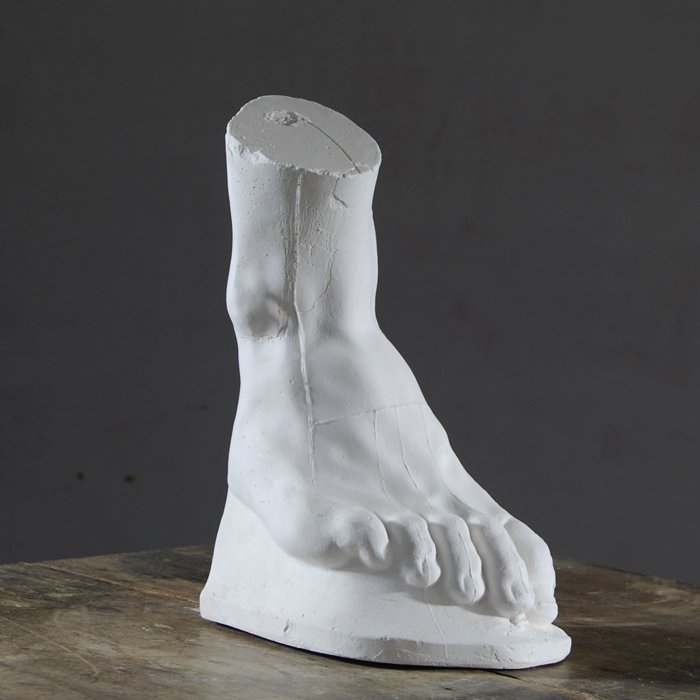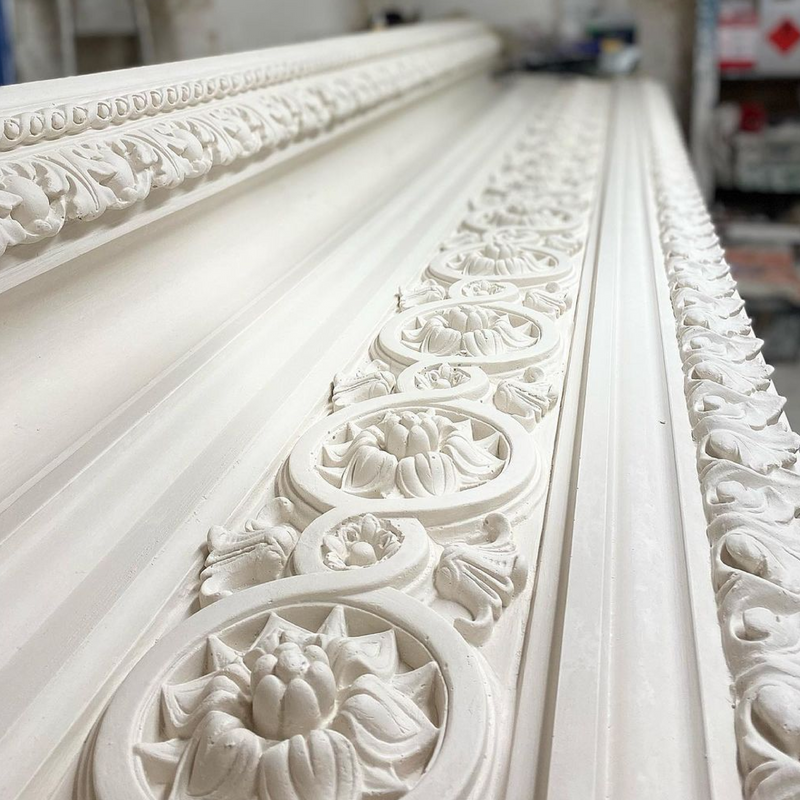Introduction to Plaster Casting
Plaster casting is a versatile and widely used technique in creating sculptures, decorative elements, and functional items. It involves pouring liquid plaster into a mold that captures the intricate details of the original model. The unique properties of plaster allow it to capture even the finest details, making it an excellent choice for artists and craftsmen. Learning the basic steps of plaster casting can open doors to a world of creative possibilities. This blog is designed to guide beginners through the essentials of plaster casting—all simplified for ease of understanding. From choosing the right materials to curing and finishing your creations, we’ll cover everything you need to get started.
Preparing Your Model for Plaster Casting
Preparing your model is a crucial step in plaster casting. This stage sets the foundation for a successful mold. Here are steps to ensure that your model is ready for casting:
Clean and Seal the Model
Start by thoroughly cleaning your model. Remove any dust, dirt, or oils. This helps the plaster adhere properly. Next, seal the model with a sealant suitable for plaster casting. This prevents the model from absorbing moisture from the plaster.
Apply a Release Agent
After sealing, apply a release agent to the model. This ensures that the model can be easily removed from the mold without damage. Common release agents include soap, oils, or commercial mold release sprays.
Secure the Model
Ensure the model is securely fixed inside the casting frame or box. It should not move during the plaster pouring. This helps prevent defects in the final cast.
Address Undercuts
Check for undercuts or deep recesses in the model. These areas can cause the model to lock into the plaster. Fill or cover these areas appropriately to simplify mold separation.
By meticulously preparing your model, you set yourself up for a smooth plaster casting process. Next, we’ll explore selecting the right plaster material to level up your casting results.

Selecting the Right Plaster Material
Choosing the correct plaster is vital for a successful casting. Here are key factors to consider:
Type of Plaster
There are different plasters available, each with unique properties. Some set quickly, while others give you more working time.
- Potter’s Plaster is commonly used in ceramic studios. It’s great for molds due to its strength and durability.
- Plaster of Paris is a basic plaster that sets fast. It’s good for simple projects.
- Hydrocal is stronger than Plaster of Paris. It’s ideal for casting robust and intricate pieces.
Setting Time
Check the setting time before starting. Fast-setting plasters are best when quick results are needed.
Surface Detail
Consider the level of detail you need. Finer plasters capture more intricate details.
Durability
For molds used repeatedly, select a plaster that is more resistant to wear. This increases mold lifespan.
Cost
Budget can be a concern. Compare plaster types and prices to find the best fit for your project.
Select the plaster that matches your specific needs for detail, working time, strength, and cost. This ensures a casting process that goes smoothly and yields high-quality results.
Creating a Mold: One-Part vs. Two-Part Molds
When crafting a plaster cast, choosing the correct mold type is key. One-part molds are simpler, often used for flat or relief items. Two-part molds are more complex but mandatory for capturing objects with undercuts or protrusions.
One-Part Molds
For one-part molds, you pour plaster over your model in a box or frame. This method suits models with one flat side. It’s easy to make and use.
Two-Part Molds
Two-part molds involve separating the model into two halves. They accommodate objects with intricate details or those that don’t lie flat. These molds require more steps but yield better results for complex shapes.
Choose one-part molds for simplicity and efficiency. Opt for two-part molds when capturing full three-dimensional objects or intricate designs. Your project’s complexity will guide your choice between these two mold types.

Mixing and Pouring Plaster: Achieving the Perfect Consistency
The right plaster consistency is crucial for a successful cast. Here’s how to achieve it:
Measuring Plaster and Water Correctly
Start by reading the plaster package for the recommended water-to-plaster ratio. Use a scale for precise measurements. Too much water makes plaster weak; too little makes it thick.
Mixing Plaster Smoothly
Sift plaster into water slowly, avoid dumping. It prevents clumps. Wait a few minutes before mixing to let plaster absorb water. Mix gently to reduce air bubbles.
Pouring without Air Pockets
Pour plaster into the lowest part of the mold. Let it flow over the model. It helps push out air and fill every detail. Tap the sides to release trapped bubbles.
Adjusting Plaster Flow
If plaster is too thick, it won’t capture all details. If too thin, it might not set right. Find a balance that fills the mold well and sets correctly.
Mixing and pouring plaster properly takes practice. But if you measure carefully and mix patiently, you’ll get the perfect consistency for casting.
Techniques for Eliminating Air Bubbles
Eliminating air bubbles in plaster casting is crucial for a clean and accurate final product. Here are key methods to ensure a bubble-free cast:
Use Correct Mixing Technique
Mix plaster and water slowly and gently. This prevents too many air bubbles forming.
Let Plaster Sit
After mixing, wait a few minutes. Bubbles rise to the surface and pop.
Tap the Mold
Gently tap the sides of the mold. This helps trapped air escape.
Pour Slowly
Pour plaster smoothly and steadily into the lowest part of the mold to avoid air entrapment.
Use a Brush
With a paintbrush, lightly dab the surface of the plaster. This dislodges any trapped bubbles.
Consider Vibration
A vibrating table helps bubbles rise and burst faster. It’s good for detailed pieces.
By using these techniques, you can greatly reduce air bubbles in your plaster casts, making them cleaner and more precise.

Curing and Demolding: Best Practices
When your plaster has been poured, curing and demolding come next. These steps need care.
Wait for Proper Curing
Let your plaster set. Check the package for times. Don’t rush this part.
Keep Temperature Steady
Avoid big temperature changes. They can crack the plaster. Keep the mold in a stable environment.
Test for Dryness
Gently touch the surface. It should feel firm and dry. If not, give it more time.
Loosen the Edges First
Before demolding, loosen the plaster’s edges carefully. This helps in removing the cast smoothly.
Demold Gently
Take your time here. Lift the cast carefully to prevent breaking. Patience is key.
Check for Moisture
After demolding, look for any damp spots. If found, let the cast dry more.
By following these simple steps, you’ll help ensure your plaster casts come out well.
Finishing Touches: Cleaning and Polishing Casts
After unmolding your plaster cast, the final touches are essential. They define your project’s quality and beauty. Here are simple steps to clean and polish your casts:
Removing Rough Edges
Check for rough spots or edges on your cast. Use fine-grit sandpaper to smooth them out. Move gently to avoid damage.
Cleaning the Surface
Wipe off dust from sanding. Use a slightly damp cloth for best results. Ensure the cloth is lint-free.
Repairing Blemishes
Fill small holes or cracks with fresh plaster. Mix a small batch and apply with precision. Let it cure fully.
Polishing for a Shine
Polish your cast with a soft cloth. Optionally, use a wax or sealant. This will give it a lustrous finish.
Protecting Your Work
Finally, apply a clear coat or varnish. This step is crucial for protecting your cast from moisture and wear.
By following these steps, your plaster casting will look professional and stand the test of time.